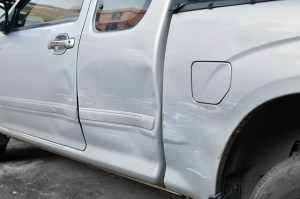Most drivers know they need car insurance to legally get behind the wheel, but a smaller number of drivers probably understand exactly what their car insurance policy protects.
Your insurance agent can answer all your car insurance questions and make sure you’re not overpaying for coverage. Schedule an appointment with a AAA insurance agent to learn more about your options.
In the meantime, we spoke to a few of our agents about frequently asked auto insurance questions.
Common Car Insurance Policy Terms
First things first: understanding the lingo in your policy. Here are some of the most common words and phrases you’ll come across when reading the conditions of your coverage. See our auto insurance terms glossary for more.
Claim
A claim is a request for an insurance company to issue payment per the terms of your car insurance policy.
Deductibles
An amount a driver must pay out of pocket before their insurance company steps in. Accepting a policy with a higher deductible can often lower premiums as it decreases what an insurance company may have to pay following an accident.
Limits
The extent to which a policy protects a driver.
Limits are often expressed in the following manner: A/B/C. “A” is the limit of what an insurance company will pay for bodily injury to a single person if a driver is at fault in an accident. “B” equals the total amount an insurance company will pay, per accident, for bodily injury if a driver is at fault. “C” is the total amount an insurance company will pay for property damage, such as damage to another motorist’s vehicle, if a driver is at fault.
Term
The period of time your car insurance policy is in effect.
Common Car Insurance Questions
What is a premium?
Premiums are what drivers pay for a car insurance policy. “Insurance carriers use underwriters to calculate the premium based on the risks associated with the policy,” explains John Donovan, sales manager of insurance at AAA Northeast.
A variety of factors affect premiums. “Carriers must account for operating costs and anticipated claims payouts,” says Donovan. “As our economy sees increases in the cost for good and services, these increases have a direct impact on the cost of insurance, reflected in rising insurance premiums.”
Other factors that affect premiums include:
- Your car: The more expensive your car, generally the more expensive your repairs and insurance rates.
- Your driving habits: The more you drive, the higher your chance of being in a crash, and greater risk typically means higher premiums.
- Where you live: Those who live in urban areas usually have higher premiums than those in rural areas because the risk of accidents, theft and vandalism grows with population density.
- Your driving record: Someone who has been in multiple accidents or has multiple moving violations is a statistically greater risk than someone with a clean driving record. Premiums follow accordingly.
- Your coverage: Accepting a higher deductible can lower your premium because it decreases what your insurance company could be forced to pay. Having higher limits or optional coverage, like collision, on the other hand, can increase what an insurance company may have to pay, which can mean higher premiums.
- Credit rating: California, Hawaii and Massachusetts are the only states where insurance companies cannot use drivers’ credit ratings to influence auto insurance premiums.
- Discounts: Have you bundled your auto insurance and homeowners coverage? Did your teen driver complete driver education, or do they get good grades in school? Is your car equipped with anti-theft devices? Answering yes to any of these questions can sometimes help lower premiums. Depending on the state you live in, the AAA Driver Improvement Program can also earn you a discount on your insurance premium.
Who is covered by my auto insurance?
Auto insurance is coverage for your vehicle, not for individual drivers. Anyone who is part of your household or has permission to use your car has the same insurance protection as the named insured. This is a key distinction that may affect who you allow to borrow your car. When you loan another person your car and they get into an accident, your insurance will be the primary policy liable for covering costs.
What is liability protection?
Liability protection is the foundation of an auto insurance policy. It protects drivers against damage they inflict upon other people or their property. Nearly every state mandates drivers to have a minimum level of liability protection.
Do I need uninsured motorist coverage?
Uninsured or underinsured motorist coverage is designed to protect you from drivers who don’t have insurance or damage you or your property beyond the limits of their insurance. This is optional coverage in some states and mandatory in others. Currently, Connecticut, Massachusetts, Maine, Vermont, New York and Maryland require that all drivers purchase uninsured motorist insurance.
In other states, such as Delaware, it is automatically included in drivers’ insurance policies, and dropping it requires that drivers reject the coverage in writing.
Personal injury protection is also a requirement in some states. It covers medical bills and may cover other costs for drivers and their passengers after an accident regardless of whether they were at fault.
What is collision coverage vs. comprehensive coverage?
Collision coverage protects your vehicle should it strike another object like a wall, tree or vehicle. It’s optional under state law but is often a requirement for anyone financing a vehicle purchase. Some drivers who carry collision coverage consider dropping it when the cost of the protection exceeds the value of their vehicles.
Comprehensive coverage, on the other hand, is optional under state law but often a requirement for drivers who’ve financed vehicle purchases. “Think of comprehensive coverage as the coverage for damage to your vehicle that happens from anything other than a collision,” says Ashley Kehew, sales manager for insurance at AAA Northeast. “It covers fire, theft, vandalism, flood and glass. Beyond that it also covers if a tree falls on your vehicle, or if you were to hit an animal, like a deer.”
AAA insurance experts are available to answer more of your car insurance questions. Get connected with one of our helpful insurance agents today.
Have more insurance questions? Check out our Ask an Insurance Agent series.
One Thought on “Ask an Agent: Your Car Insurance Questions Answered”
Leave A Comment
Comments are subject to moderation and may or may not be published at the editor’s discretion. Only comments that are relevant to the article and add value to the Your AAA community will be considered. Comments may be edited for clarity and length.
















Is it still true that being female and being a senior citizen also factor into the cost of auto insurance?